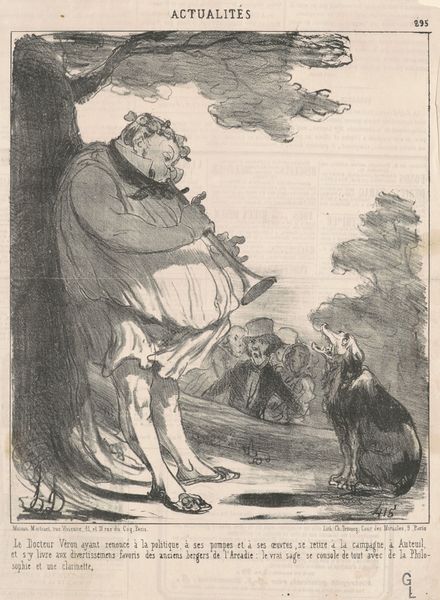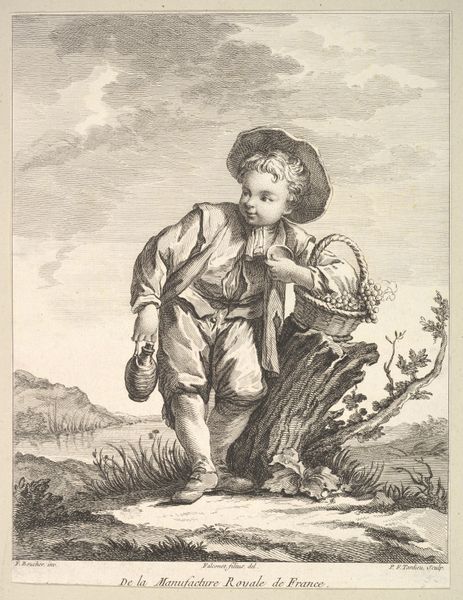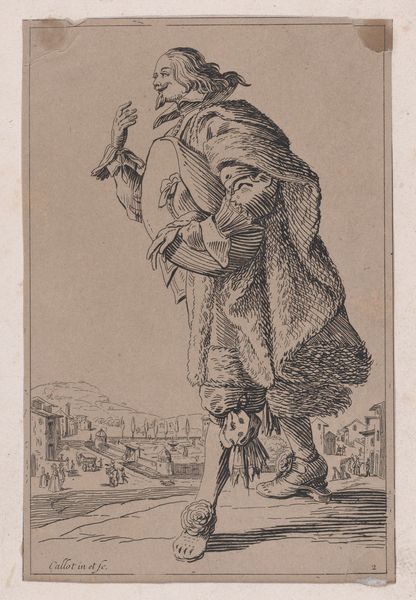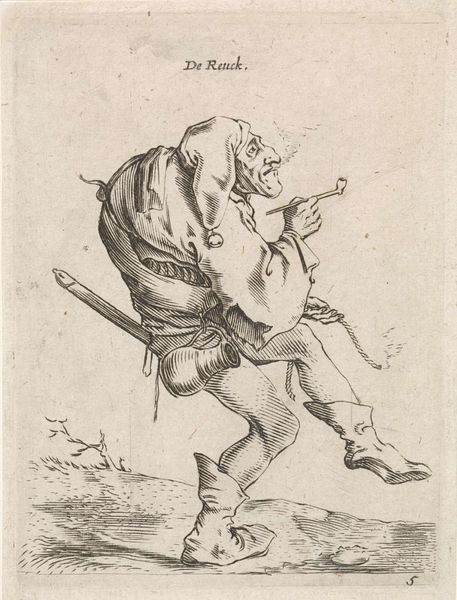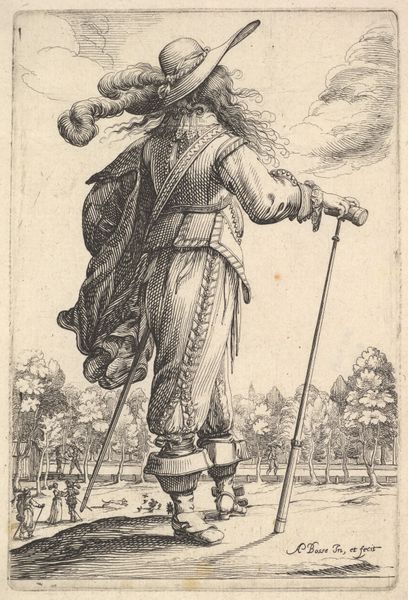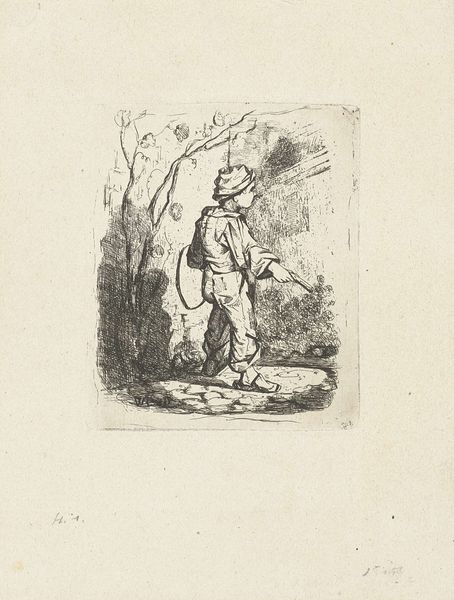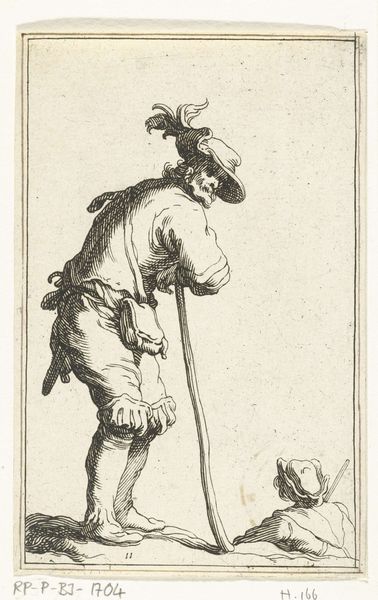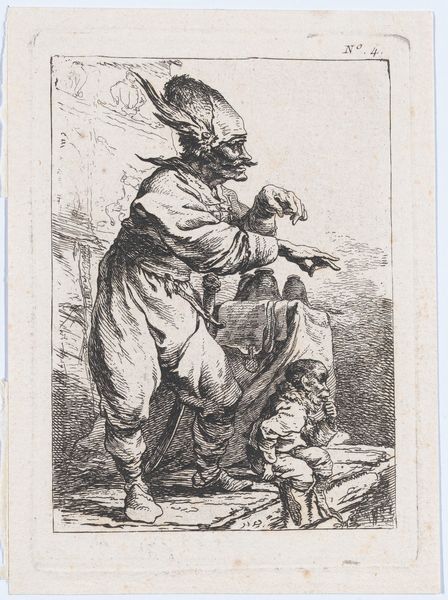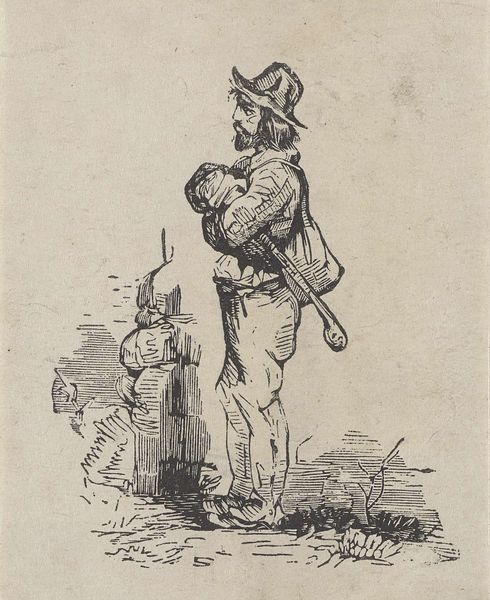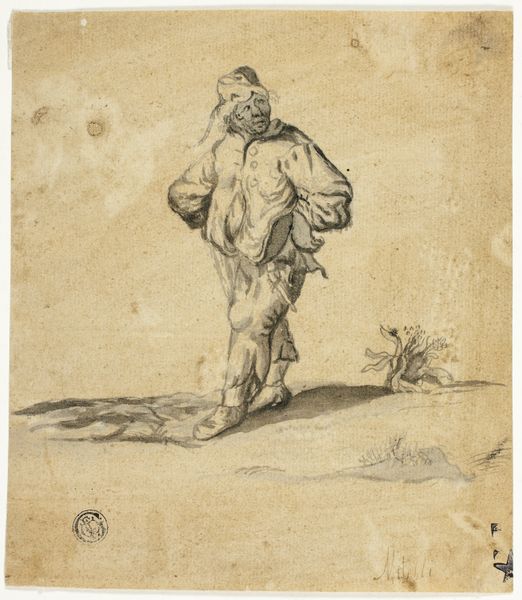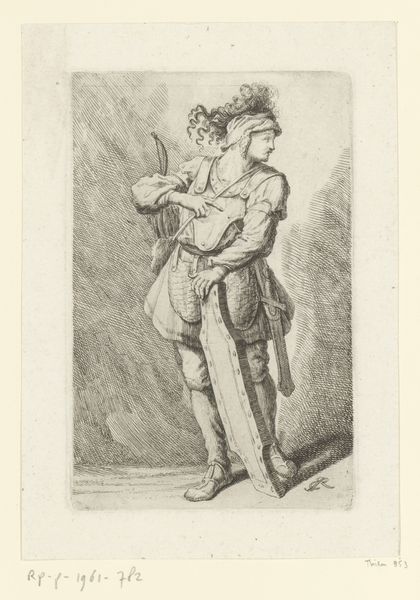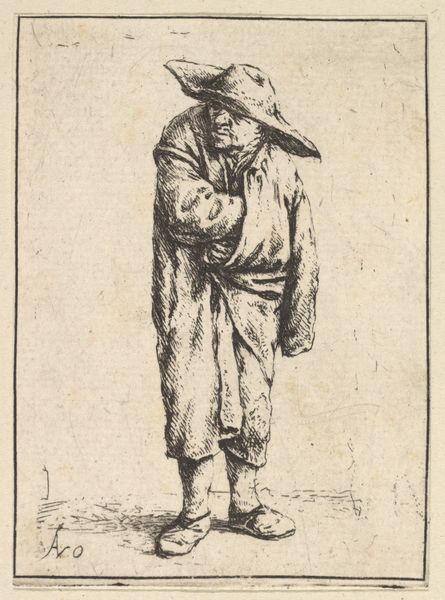
Plate 3: Bertoldo holding a hare in his hand, from "Bertoldo, Bertoldino, and Cacasenno" 1705 - 1715
0:00
0:00
drawing, print, engraving
#
drawing
#
ink drawing
#
narrative-art
#
baroque
# print
#
figuration
#
genre-painting
#
engraving
Dimensions: Sheet (Trimmed): 8 7/8 × 5 15/16 in. (22.5 × 15.1 cm)
Copyright: Public Domain
Curator: Hmm, what does this print stir in you? It’s titled "Plate 3: Bertoldo holding a hare in his hand, from 'Bertoldo, Bertoldino, and Cacasenno'," crafted between 1705 and 1715. It resides here at the Met. Editor: A wistful melancholy, like a pastoral dream laced with dark humor. Is that Bertoldo contemplating lunch? He’s cradling that hare like a precious secret, but the scratchy ink and bare tree give it a slightly ominous edge. Curator: It's by Giuseppe Maria Crespi, an engraver working in the Baroque style. "Bertoldo, Bertoldino, and Cacasenno" is a collection of comic tales, really, a folk narrative centered on a simple, rustic character who, through cunning and wit, navigates the complexities of courtly life. Editor: Ah, so the hare probably symbolizes…vulnerability? Naiveté amidst power? I can see Bertoldo is a proto-trickster, trying to survive. I like the crude directness. Curator: It’s more than survival. Bertoldo embodies a kind of earthy wisdom that punctures the pretensions of the aristocracy. Think of the hare, not as simply vulnerable, but as something he’s actively using. An offering, a bargaining chip perhaps? Hares themselves carry layered symbolic meanings, everything from fertility to timidity, and Crespi seems interested in holding those dualities. Editor: A darkly comic folk hero. Holding up the powerful, using sly wit. The contrast between his grubby clothing and the rather dignified landscape makes it clear the picture is a clash of high and low. Plus that bare tree -- feels like something bad already happened to him, before the next hare incident. Curator: The setting plays a vital role, it situates him in relation to "civilization" as the small city represents at the end of the path, but also shows how separated and outcast he looks. Editor: So, a print offering both mirth and a pointed critique. Bertoldo forever plotting, perhaps. Curator: Indeed, the image reflects a period of social commentary wrapped in humor and recognizable folk narratives, something Crespi achieved quite elegantly. Editor: Well, I’ll look at hares differently now.
Comments
No comments
Be the first to comment and join the conversation on the ultimate creative platform.
